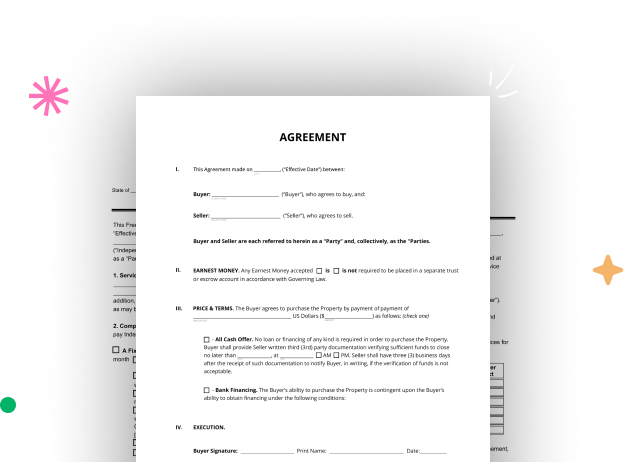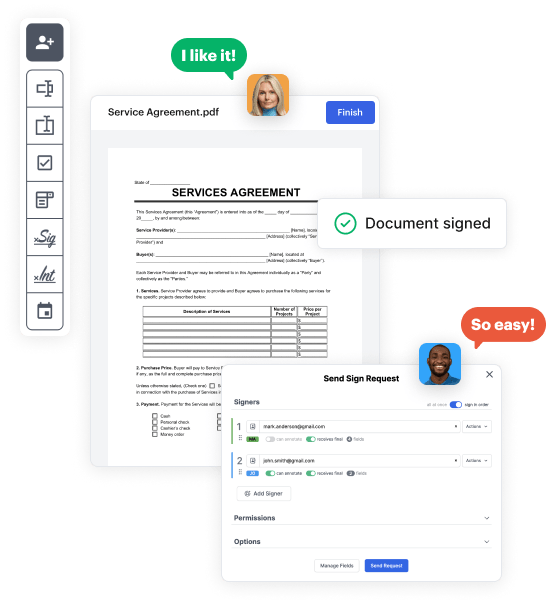

First, sign in to your DocHub account. If you don't have one, you can easily sign up for free.
Once signed in, go to your dashboard. This is your central hub for all document-based processes.
In your dashboard, select New Document in the upper left corner. Opt for Create Blank Document to put together the Oklahoma Criminal Law Form from a blank slate.
Add various items like text boxes, photos, signature fields, and other interactive areas to your template and designate these fields to particular users as needed.
Refine your form by incorporating directions or any other crucial information using the text option.
Meticulously check your created Oklahoma Criminal Law Form for any mistakes or essential adjustments. Utilize DocHub's editing capabilities to fine-tune your template.
After completing, save your work. You may select to save it within DocHub, export it to various storage platforms, or send it via a link or email.